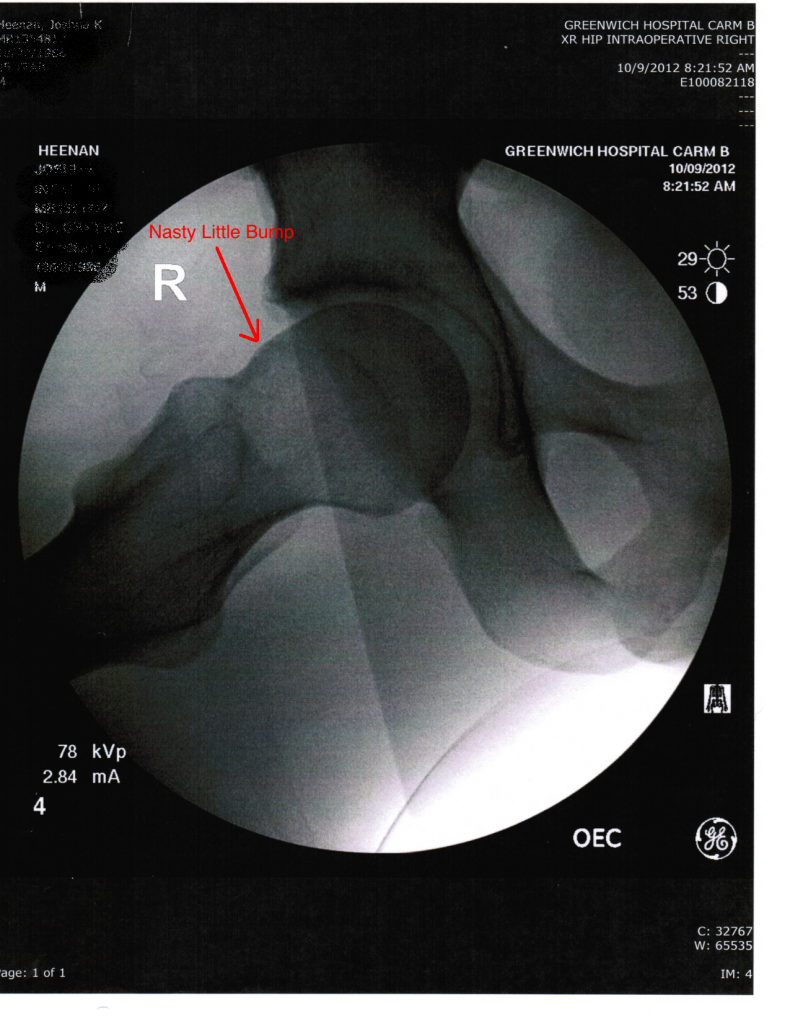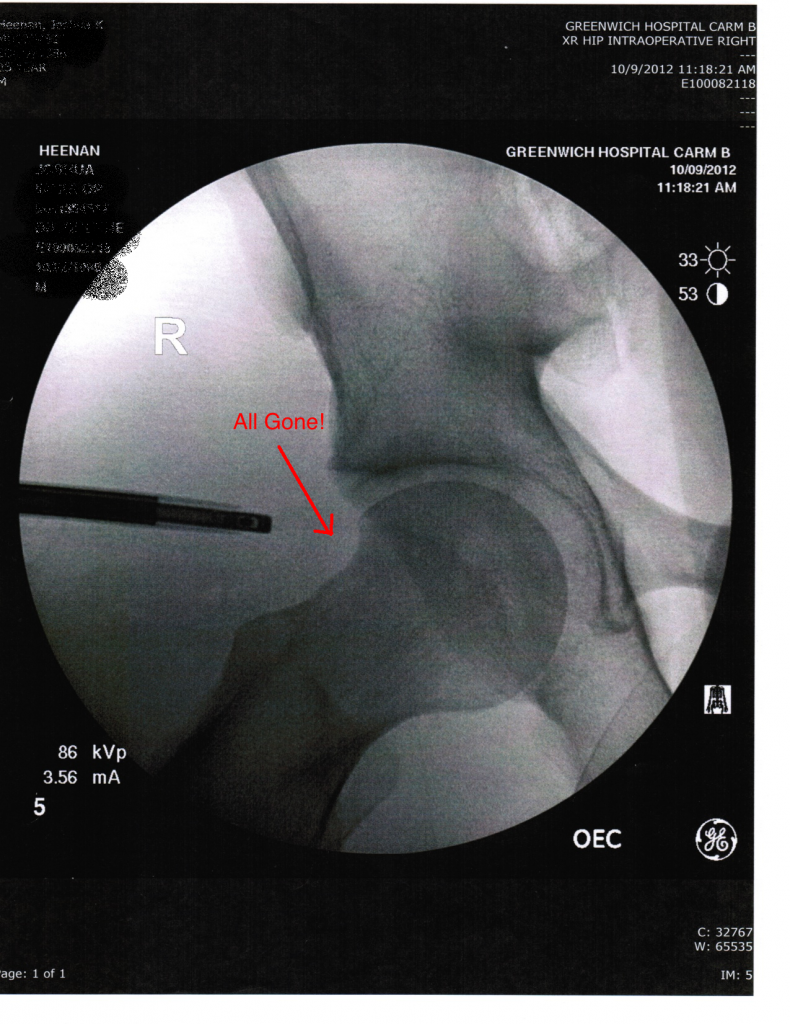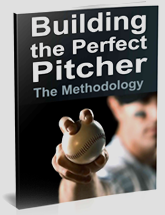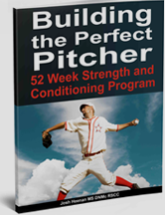Long-Term Athletic Development vs. “Classes”
It feels like a daily occurrence that I receive phone calls from athletes and parents inquiring about the training I direct. Often, the player or parent wants a class to participate in, usually an off-season or pre-season workout that is geared towards their sport.
As I stated in my presentation in Fairfield a few months ago, our goal of long-term athletic development is ”to allow each individual athlete to reach their genetic potential in a healthy manner, both mentally and physically. This means minimizing injury and allowing fitness/sport to be a fun part of an athletes life regardless of the level of participation.”
Classes can be a way to introduce general skills to athletes. Most sports require many of the same movements as other sports, so a general approach to training can produce results, there is no denying that. The problem with classes are in-fact many.
- Athletes are often not screened or assessed for movement or orthopedic limitations.
If there is no assessment, how do you know what needs to be corrected? - Assessments are not looked at when altering a class.
What’s the point of assessment if your not going to use the information it provided? - Injury histories are not taken.
Previous injury is the #1 predictor for future injury. If you do not know how and why someone had a previous injury, how are you going to minimize the risk of it happening again? - Specificity of sport is not accounted for.
There is more than one way to skin a cat or train an athlete, but forcing every athlete to do the same thing without making modifications for the sport an athlete participates in or the position they play is often going to set them up for injury or less than optimal performance outcomes. - There is no change in programming for age or skill level.
I’ve seen classes where professional football players and 13 year old softball players are handed the same program (in front of each other). I can’t make this stuff up. The demands a growing adolescent girl and a professional football player are drastically different and should be accounted for. - The trainers/ coaches are awful and don’t know how to coach, let alone coach numerous athletes at the same time.
To be fair this can happen anywhere. I have walked into a division I college weight room and saw a female basketball team doing cleans; every single girl had a valgus collapse of their knees (some were actually smashing each other). And the coaches then wonders why they lose 4 of their 11 athletes to ACL tears that year.

Long-term athletic development is always the goal when an athlete comes and trains with me in either our 1 on 1 training, semi-private training, or our Sacred Heart Baseball Team. We start with the end in mind, not just 6 weeks from now, but years from now.
When training any clients, assessment always takes place on day one. If we find any drastic limitations or red flags, we elicit our physical therapists on staff to help diagnose the problem. In more sever cases, we refer out to a physician whom can help better address the problem. Our in-depth orthopedic and movement assessment along with injury history, personal/sport goals we are able to develop a program that allows us to attack limitations and strengthen weaknesses immediately. This allows us to set short-term and long-term goals for on and off the field.
Long-term athletic development is always an ongoing process, and needs constant attention. This means training in-season (even if frequency and volume is down) and training around injuries. To continually develop, athletes must push out of their comfort zone and work their weaknesses on an ongoing basis to maintain the skills and adaptations their body has attained from training and sport.
When looking to reach the highest possible ability in your sport look for qualified professionals that understand the demands of your sport and how to help you reach your goals. These professionals need to perform an in-depth assessment and let their assessment results dictate the training on top of age and injury history.
If you are looking for trusted professionals in your area please contact me and I will be glad to help you find the best in your area.
Mastering the Perfect Baseball Off-Season, Part 1: The Program
Sacred Heart University’s off-season baseball program has yielded tremendous results, dramatically improving team performance on the field. Our methods are based on individualization for each athlete to optimize injury prevention, force production, nutrition and psychology… Continue Reading
The Chronology of My Femoroacetabular Impingement (FAI) and Surgery
As I stated in my last post I recently had FAI surgery. For those who do not know exactly what FAI is, the video below does a great job of explaining the etiology and diagnosis of this condition.
Obviously, my surgery is going to be slightly different from the next persons due to the causes and restrictions of the ailment, so take everything with a grain of salt and ask questions below to allow me to clarify.
Timeline
October 2008: Did a lateral lunge while training and felt a pop in my right hip, the pain was partially in my right groin and right lower abdomen. Got checked out by a PT and we determined it to be a sports hernia. After 3 weeks of rehab, I felt good enough to resume powerlifting.
January 2009: Competed in a powerlifting meet.
February 2009-December 2009: Trained 3-5 days a week mainly for athletics and to keep my hip from hating me. PT 3x a week for 2 months followed by a month of Chiropractic work.
January 2011: Hip pain reared it’s head while deadlifting. This time it’s migrated into lower back pain (mild at worst). groin pain, and anterior hip pain.
January 2011- March 2011: Continued modified training and treatment 1-2x a week by Chiropractor, mainly on adductors.
March 2011: Went for opinion from an orthopedist on hip pain and constant “tight groin” feeling. MRI reveled some laberal damage and he wouldn’t recommend surgery.
May 2011: Second opinion from another orthopedist. New x-rays showed FAI both cam and pincer. MD suggested more PT and Chiro work.
September 2011: My right glute has highly noticeable atrophy of my glute max and what seems to be a missing glute medius. Pain is 6-8 out of 10 everyday, training brings me to an 8 consistently.
October 2011: Third opinion by one of the best hip docs in New England. In a matter of 3 minutes shows me “extreme wear, nasty laberal damage, and a nasty bump on my femoral head that is destroying my acetabulum”. He recommends getting FAI surgery once I feel I have exhausted all conservative avenues. He also warns me of the risk of a total hip replacement by the age of 40 if in the cartilage and labrum of the sock are destroyed. In the mean time I will get a cortisone shot to minimize the pain.
November 2011- May 2012: Training severely modified, work with a few new PTs whom get some relief, but overall the same.
June 2012-September 2012: Training is painful on my right lower body. I proceed to train only my left leg and upper body. Sleeping has become incredibly difficult. I am currently getting 2-4 hours of sleep almost every night and wake up feeling like I have an arthritic hip. My right glutes are no-where to be found, and I have a mild limp.
October 2012: Right FAI Surgery
3 hours of surgery
– Acetabulum is shaved down to allow more room for the femur
– Femur is shaved down to interact properly without smashing against the acetabulum, including that nasty bump that’s causing me lots of trouble.
– The labrum of my acetabulum has bone ossified in it. That area is debrided of bone and 4 sutures are put in place to repair the labrum.
– No cartilage damage was found, which was the big worry for myself and the doctor.
To show the variability of this procedure and the recovery; I have attached a chart of common arthroscopic procedures. Had I had cartilage damage, microfracture to the acetabulum would have been necessary and completely changed my recovery.
Currently, I am about a week out of surgery and have slept 6-9 hours a day and wake up relatively pain free.
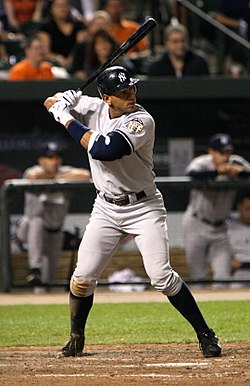
The only thing I want to have in common with this guy is our surgeon.
Having surgery was not even a consideration 3 years ago, but pain, lack of sleep, and poor quality of life for a young active athlete was more than enough to put me over the edge. As with anything, finding the right practitioners or doctors was imperative. I believe the other doctors were timid because the average surgeon does not do many FAI surgeries and the outcomes can be very poor.
I am a long way from being back to where I was in January 2009, but having quality sleep back in my life has been an amazing change. I will continue to update my progress, feel free to comment below.
Extra Info: Here are a few great articles on FAI and how to train around it.
Femoroacetabular Impingement – Etiology, Diagnosis, and Treatment of FAI
Hip Pain in Athletes: The Origin of Femoroacetabular Impingement?
Training Around Femoroacetabular Impingement
Groin Pain – Referrals and Soft Tissue Therapy
Optimizing Recovery From Injury
Recovering from an injury or surgery has numerous variables that the injured person can manipulate to promote healing and faster recovery.
Many of you reading this likely know that I just underwent a femoroacetabular impingement (FAI) surgery. I am currently writing this post from hospital bed at 3 am to keep my sanity intact while waiting for the nurses to check my vitals every few hours.
When prepping clients for a surgery or athletes recovering from an injury I always try to stress what they can change NOT what is out of their control. Some of these variables include diet, supplementation, sleep, stretching, and strengthening to name a few.
I have attached a link with my go to guide I offer clients to help understanding the injury process and how they can dramatically effect the healing process through nutrition. I encourage anyone who has the slightest interest in optimizing health, recovery, or fitness to read it from front to back.
If you have any questions feel free to comment below.
Gatorade vs. PowerAde Follow Up
If any of you enjoyed my last post Gatorade vs. PowerAde, I think you will fully enjoy this article released by Precision Nutrition.
http://www.precisionnutrition.com/doctor-detective-ab-pain
I believe it will take years before people start to take the proper precautions when it comes to consuming high fructose corn syrup heavy products.
Make little changes to your lifestyle and protect yourself for the long run.
Gatorade vs PowerAde— Make an Informed Decision
Drinking sports drinks during games, practices, and training has become apart of our athletic culture. I for one see the value in consuming these types of drinks when someone has a long duration of vigorous activity (1 hour+) and their dietary needs support the calories in the beverage. Sports such as basketball, football, lacrosse, and soccer are good examples of sports that may require an in game fuel that will help rehydrate and replenish glycogen in the body. Unfortunately, baseball players feel entitled to grab a few sports drinks for every game. Unless you are a catcher or pitcher whom throws a ton of innings, water would be a much better option.

Athletes often forget that their body responds to the fuel that they consume. In the short term, most athletes can get away with dietary murder while they are young and growing. Once they approach higher-level athletics, the difference between starting and sitting is miniscule. At elite levels, it is imperative that athletes take every ethical competitive advantage possible to achieve the next level of greatness. In my view, diet is often more important than training for optimal growth and strength development.
Our student athletes at SHU have access to a wide variety of food and beverage choices. I believe the school has a contract with Coke for distribution of all drinks on campus, thus our athletes often drink PowerAde. Seeing my players drink PowerAde drives me absolutely crazy!
PowerAde’s main ingredient is High Fructose Corn Syrup (HFCS). As I posted here, the quality of nutrient in HFCS is absolute garbage. HFCS use has been linked to insulin resistance, obesity, diabetes, higher LDL, higher triglycerides and a sedentary lifestyles.1 I understand that sucrose, the main ingredient in Gatorade, has been linked to many of the same issues as high fructose corn syrup, except for one large one— LIVER DYSFUNCTION.

The American Journal of Physiology – Gastrointestinal and Liver Physiology produced a study that looked at the effects of HFCS on the livers of rats compared to those with a standard rat diet. After 16 weeks, the results of the study showed that mice given HFCS developed nonalcoholic steatohepatitis, also called fatty liver disease.2
Steatohepatits is know to the general public as alcoholic liver disease. Both alcoholic and non-alcoholic forms of steatohepatitis is the precursor to cirrhosis of the liver. This on top of the poor diets most youths have we are setting them up for serious disease and illness in the near future, and for athletes this type of inflammation could hurt their performance in training and on the field as well as their ability to recover.
I plead with my athletes and explain to them the damage they may be causing their bodies and how can influence their body composition, health, recovery and performance. Usually they are not willing to give up sports drinks all together so we can agree to have them use Gatorade instead of PowerAde as a start, with water as our normal end goal.
Take the extra effort to cut out anything with high fructose corn syrup especially sports drinks and stay ahead of your competition.
1. Angelopoulos TJ, Lowndes J, Zukley L, et al. The Effect of High-Fructose Corn Syrup Consumption on Triglycerides and Uric Acid. J. Nutr. 2009;139(6):1242S–1245S.
2. Tetri LH, Basaranoglu M, Brunt EM, Yerian LM, Neuschwander-Tetri BA. Severe NAFLD with hepatic necroinflammatory changes in mice fed trans fats and a high-fructose corn syrup equivalent. Am J Physiol Gastrointest Liver Physiol. 2008;295(5):G987–G995.
Why All Baseball Players Should Be Using Creatine
Creatine is a compound found primarily in muscle cells in the body and in food, especially red meat. Baring any liver or kidney dysfunctions, creatine has been show to be safe to use for adolescences and adults. In fact, there is some research that shows lower levels of LDL and triglyceride for users of the product.1

In numerous studies, the use of creatine has been show to increase lean body mass, decrease short sprint times (power), increase vertical jump (power), and an increase in creatine levels in skeletal muscle.2 During activities with short bursts (~10 seconds) of work, our body utilizes creatine as a source of fuel, giving us more energy readily available.
Pitchers specifically have even more reason to be using this supplement year round. Bodyweight has been directly correlated to fastball velocity, and creatine has been shown to increase bodyweight through both muscle mass and water retention.3 The increased bodyweight allows pitchers to put more force into the ground and transfer more force into the ball.
As a general rule of thumb, our Sacred Heart pitchers will gain 2-4 mph a season during their 4 years in college. As much as I would love to say it’s just training, there are numerous reasons why we get increased ball velocity each year including mechanical improvement, growth of body due to puberty, increased muscle mass, and improved body awareness/muscular coordination. The interesting trend is that most of our athletes tend to add anywhere from 5-15 lbs of bodyweight each year.
_thumb.jpg?max_width=450)
Does 5-15lbs = 2-4mph on the mound? Maybe.
My recommendations for creatine are based on the most studied form— creatine monohydrate. Other forms may be fine, but they have limited research backing them and are outrageously priced. Take 5-10 grams a day ideally post workout with a protein and carbohydrate shake. There is little need to use loading protocols to “saturate” the muscles. Just be consistent with your use.
This post is geared towards baseball players, but in reality, if you are an athlete or have athletes that are looking to move faster, jump higher, and have more energy; this is probably a supplement you would be wise to investigate for yourself.
Feel free to post questions below.
Citations
1. Juhn MS, Tarnopolsky M. Potential side effects of oral creatine supplementation: a critical review. Clinical Journal of Sport Medicine. 1998;8(4):298–304.
2. Ostojic SM, others. Creatine supplementation in young soccer players. International journal of sport nutrition and exercise metabolism. 2004;14(1):95.
3. Werner SL, Suri M, Guido JA Jr, Meister K, Jones DG. Relationships between ball velocity and throwing mechanics in collegiate baseball pitchers. J Shoulder Elbow Surg. 2008;17(6):905–908.
Matt Fitton Signs Pro Contract

Post written by John Servilla
Matt Fitton, a four year starter from Sacred Heart University, has made the next step in ever baseball player’s dream by signing a profession contract with the Newark Bears. Fitton made his debut Monday, June 20 with the Bears against Worcester and pitched a scoreless 1.1 innings of relief, striking out three with a hit and a walk allowed.
Fitton, a 6-9 left-handed pitcher from Lebanon, CT, graduated this May after playing four years for the Pioneers. As a captain on this past season’s 2011 Northeast Conference championship team, he led Sacred Heart with 20 appearances. He closed out his collegiate career in impressive fashion in the NCAA Clemson Regional, allowing just one run in 5.2 innings of relief against the Clemson Tigers on June 3. Fitton finished the season 2-2 with a 4.20 ERA, striking out 32 batters in 45.0 innings.
The Newark Bears are a part of the Independent Can-Am League and Fitton will play for former Major League star outfielder Tim Raines, who manages the Bears. Other former big leaguers on his new team include Tim Raines, Jr. (outfield), Daryl Ward (infield), Jim Leyritz (third base coach), and Ron Karkovice (assistant coach).
You can follow Fittons stats on:
http://canamnewark.bbstats.pointstreak.com/player.html?playerid=154651
Sacred Heart University Baseball 2011 Season in Review
The website has been lacking lately due to a crazy busy in-season schedule this year.
For those of you whom have not been following, Sacred Heart’s Baseball Program won the Northeast Conference in dramatic fashion with 3 complete game wins from underclassman pitchers.
From there SHU earned a bid to the NCAA Division I National Tournament held at Clemson University.
Although the team did not do as well as they had hoped, there were many highlights along the way. Most notably breaking the school record of wins in a season for the second straight year now paced at 34.
Individual Awards were as follows:

Nick Leiningen
- Rookie of the Year and Second-Team All-NEC Pitcher award
- He was second in the NEC this season with six complete games.
http://www.sacredheartpioneers.com/sports/m-basebl/2010-11/releases/20110519xshxmy
- “Louisville Slugger” Freshman All-American Baseball Team
http://www.sacredheartpioneers.com/sports/m-basebl/2010-11/releases/20110608rqtra5
- All-NEC Tournament Team
http://www.sacredheartpioneers.com/sports/m-basebl/2010-11/releases/20110522ewwnws
- Twice named both NEC Pitcher of the Week
http://www.sacredheartpioneers.com/sports/m-basebl/2010-11/releases/201104047hi0g0
- Three times NEC Rookie of the week
http://www.sacredheartpioneers.com/sports/m-basebl/2010-11/releases/20110516eo148w
Rob Griffith
- First-Team All-NEC at first base
- Tying for the league lead in RBI with 43
- Team-best four homeruns
- Error-free season at first base
http://www.sacredheartpioneers.com/sports/m-basebl/2010-11/releases/20110519xshxmy

JJ Edwards
- First-Team All-NEC outfielder
- Led the team and finished second in the NEC with a .388 batting average and 76 hits
- Led the team this season with 38 runs and a .425 OBP
- Did not commit an error despite playing every game this season
http://www.sacredheartpioneers.com/sports/m-basebl/2010-11/releases/20110519xshxmy
- New England Intercollegiate Baseball Association Division I All-Star Game 1st Team
http://www.sacredheartpioneers.com/sports/m-basebl/2010-11/releases/20110531cl3rrk

Steve Tedesco
- First-Team All-NEC outfielder
- Team-best 14 stolen bases
http://www.sacredheartpioneers.com/sports/m-basebl/2010-11/releases/20110519xshxmy
- Capitol One All District team
http://www.sacredheartpioneers.com/sports/m-basebl/2010-11/releases/20110506u4ga0j

MJ Schifano
- Second-Team All-NEC at third base
http://www.sacredheartpioneers.com/sports/m-basebl/2010-11/releases/20110519xshxmy
- Akadema Northeast Conference Co-Pitcher of the Week
http://www.sacredheartpioneers.com/sports/m-basebl/2010-11/releases/20110425u8m4rv

Hunter Phillips
- Second-Team All-NEC honors at second base
http://www.sacredheartpioneers.com/sports/m-basebl/2010-11/releases/20110519xshxmy
- Akadema Northeast Conference Player of the Week
http://www.sacredheartpioneers.com/sports/m-basebl/2010-11/releases/20110516eo148w
- 15th hardest to Strike Out in the NCAA
http://www.ncaa.com/stats/baseball/d1/current/individual/339

Troy Scribner
- Second-Team All-NEC pitcher
- Tied for the NEC lead with eight wins
- 83.2 innings on the mound, second most in the NEC.
http://www.sacredheartpioneers.com/sports/m-basebl/2010-11/releases/20110519xshxmy
- New England Intercollegiate Baseball Association Division I All-Star Game 2nd Team
http://www.sacredheartpioneers.com/sports/m-basebl/2010-11/releases/20110531cl3rrk
- NEC All-Tournament Team
http://www.sacredheartpioneers.com/sports/m-basebl/2010-11/releases/20110522ewwnws

Derik Horn
- Clemson Regional All-Tournament team
http://www.sacredheartpioneers.com/sports/m-basebl/2010-11/releases/201106082p2c99
- NEC All-Tournament team
http://www.sacredheartpioneers.com/sports/m-basebl/2010-11/releases/20110522ewwnws

Robert Maguire
- Akadema Rookie of the Week by the Northeast Conference
http://www.sacredheartpioneers.com/sports/m-basebl/2010-11/releases/20110509hjh3df
Connor McEvoy
- Akadema Northeast Conference Rookie of the Week
http://www.sacredheartpioneers.com/sports/m-basebl/2010-11/releases/20110418rx39fd

John Hermanson
- Akadema/Northeast Conference Pitcher of the Week
http://www.sacredheartpioneers.com/sports/m-basebl/2010-11/releases/201103214bs48a

John Murphy
- NEC Tournament MVP
http://www.sacredheartpioneers.com/sports/m-basebl/2010-11/releases/20110522ewwnws
Myth: Dieting And Hitting The Gym Are The Only Ways To Stay In Shape
Yep, you heard it here first, the sad truth is research has found that exercise does not work in changing body composition and diets don’t work because of a lack of compliance.
Let’s delve a bit deeper.


